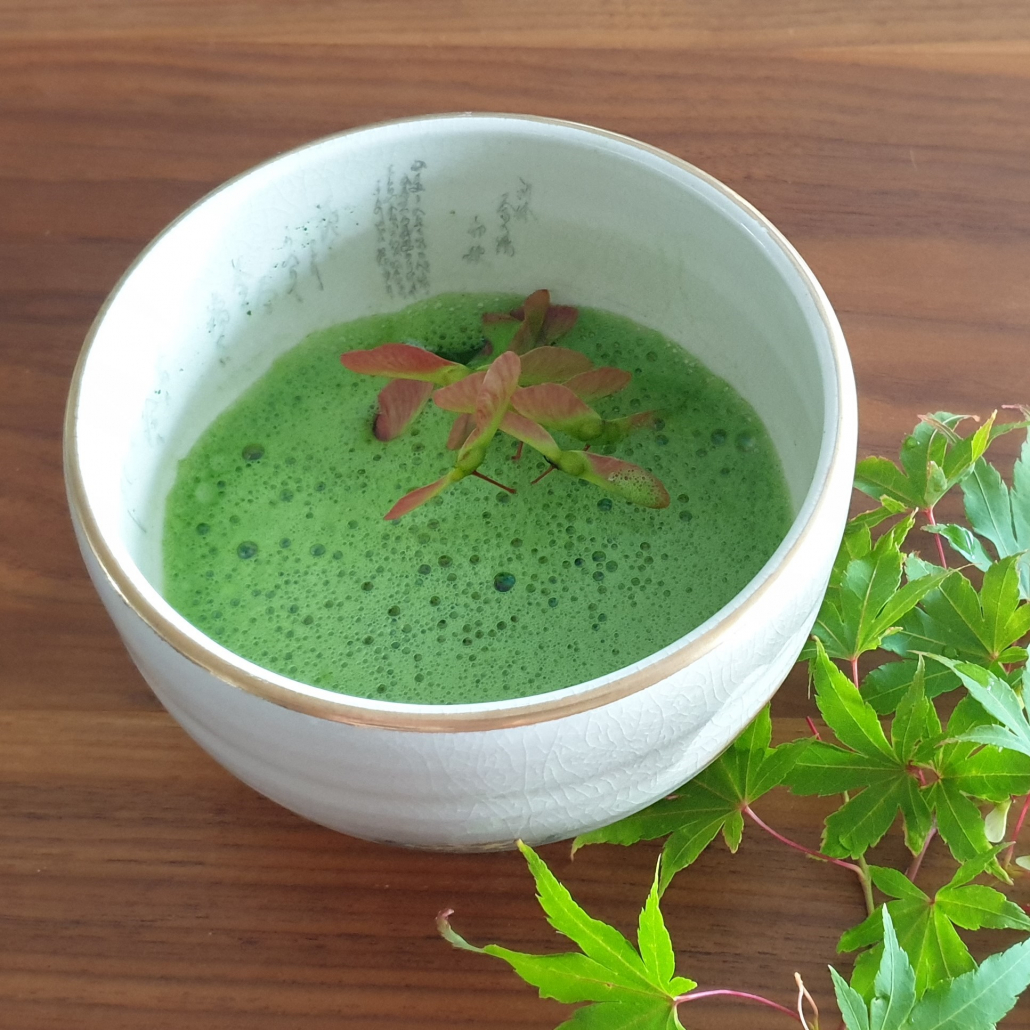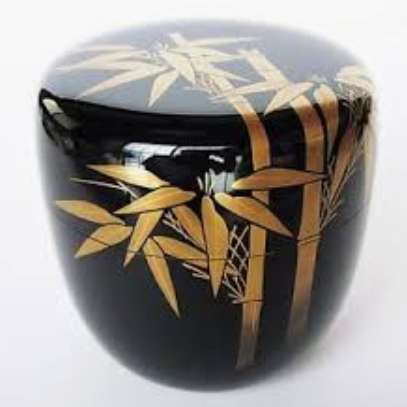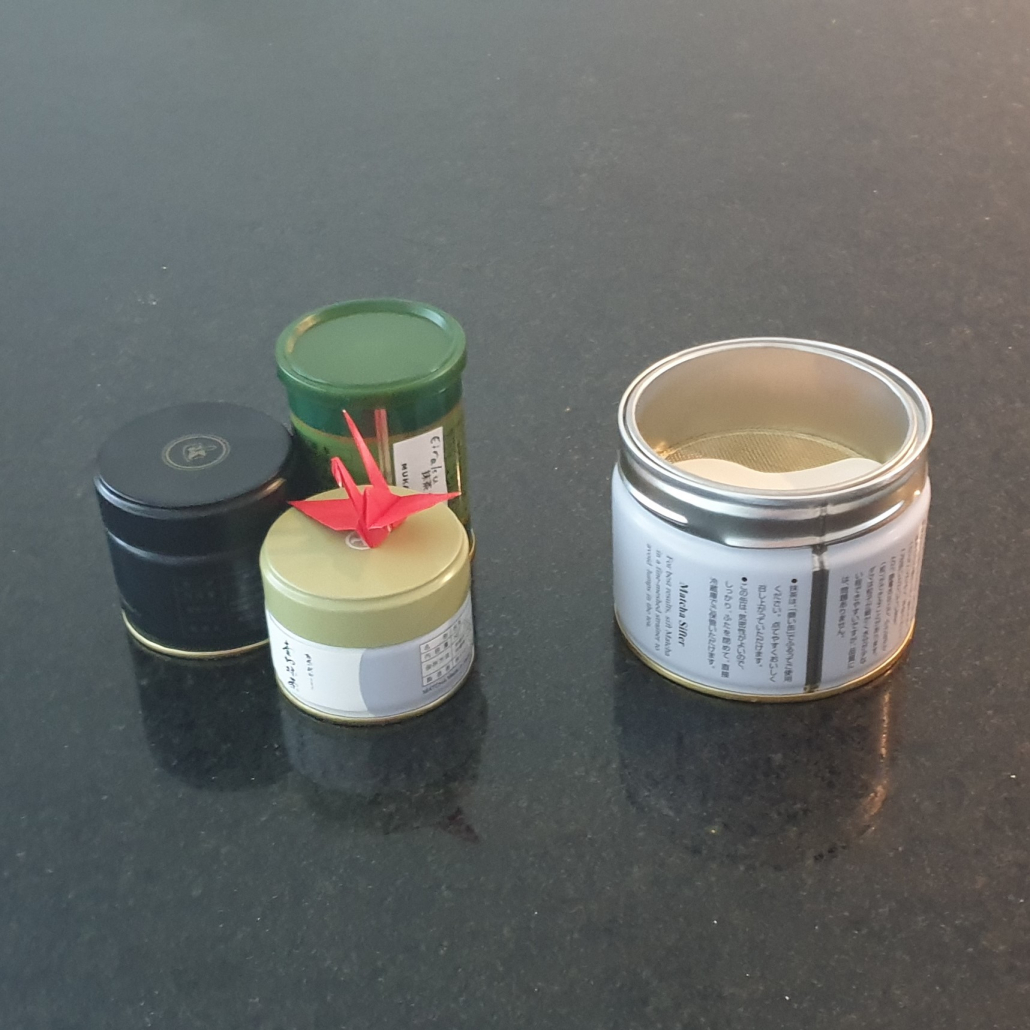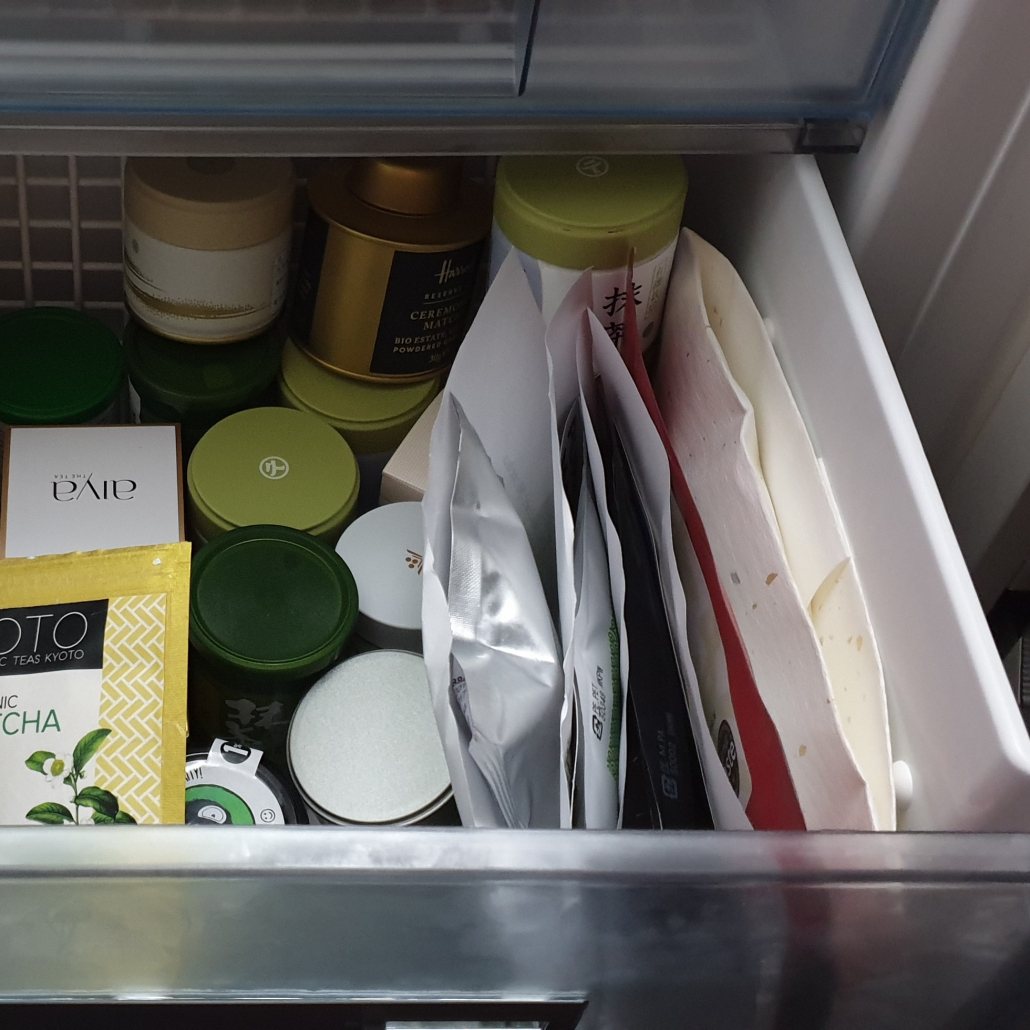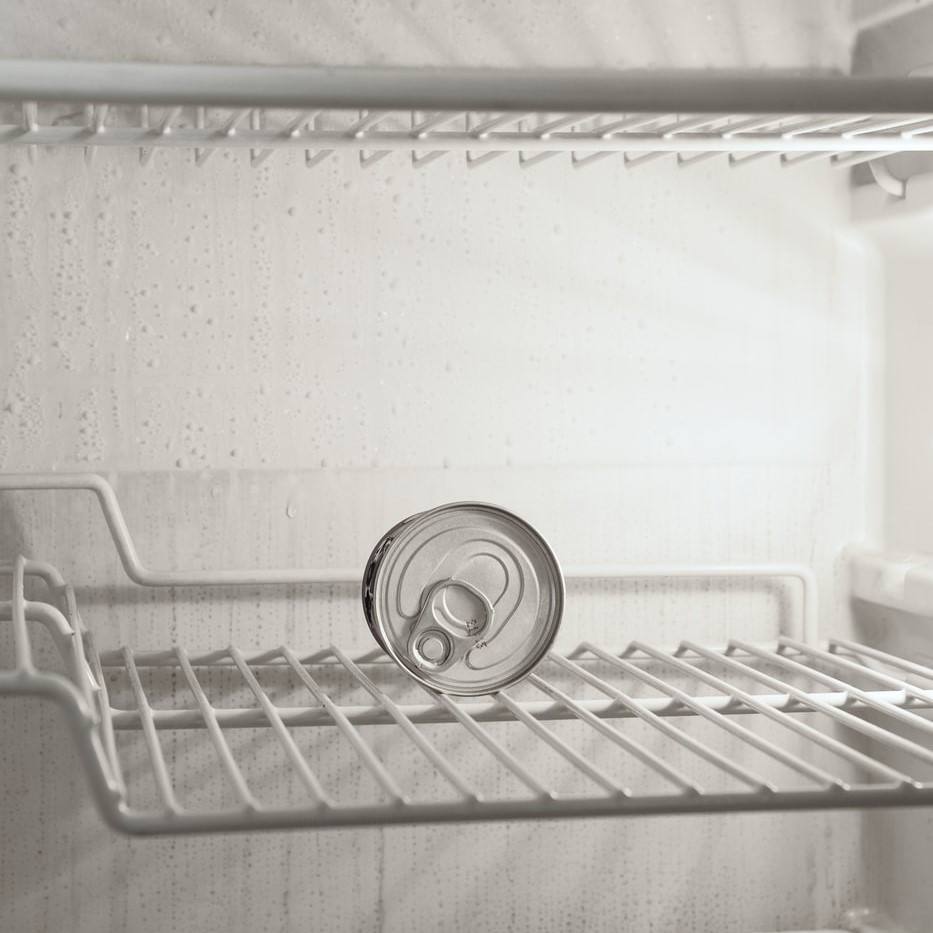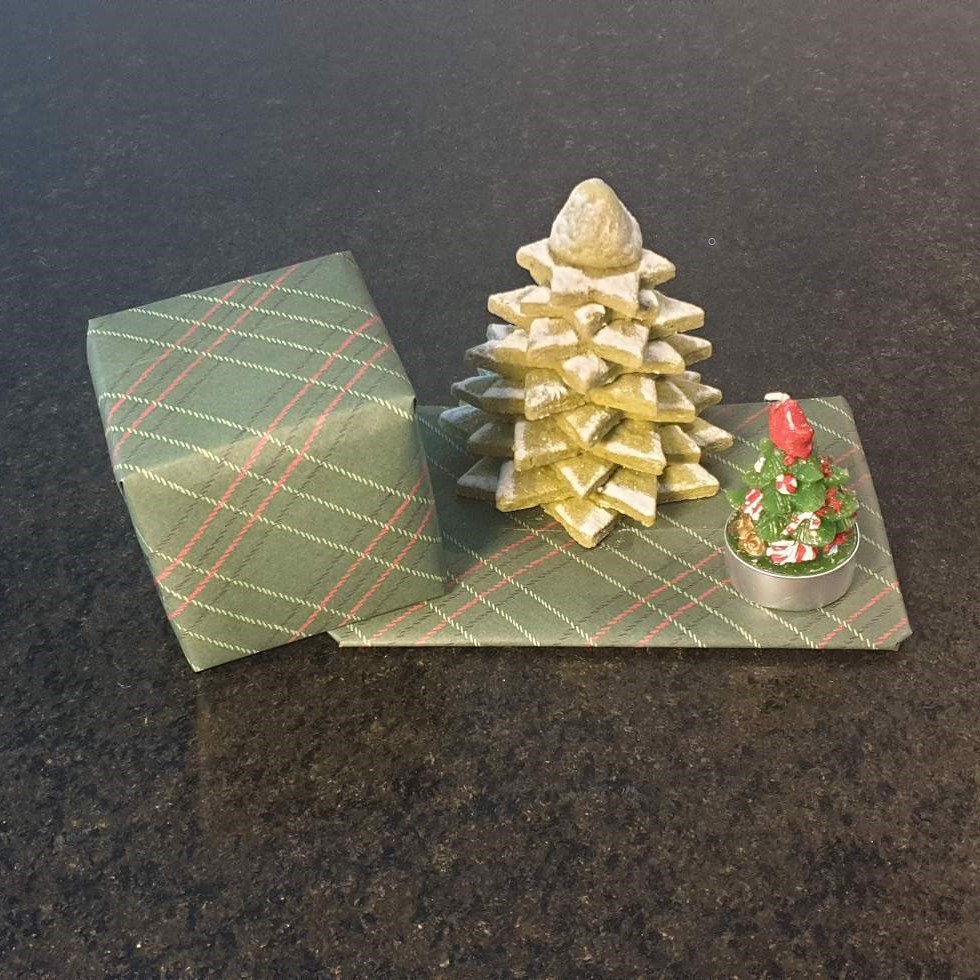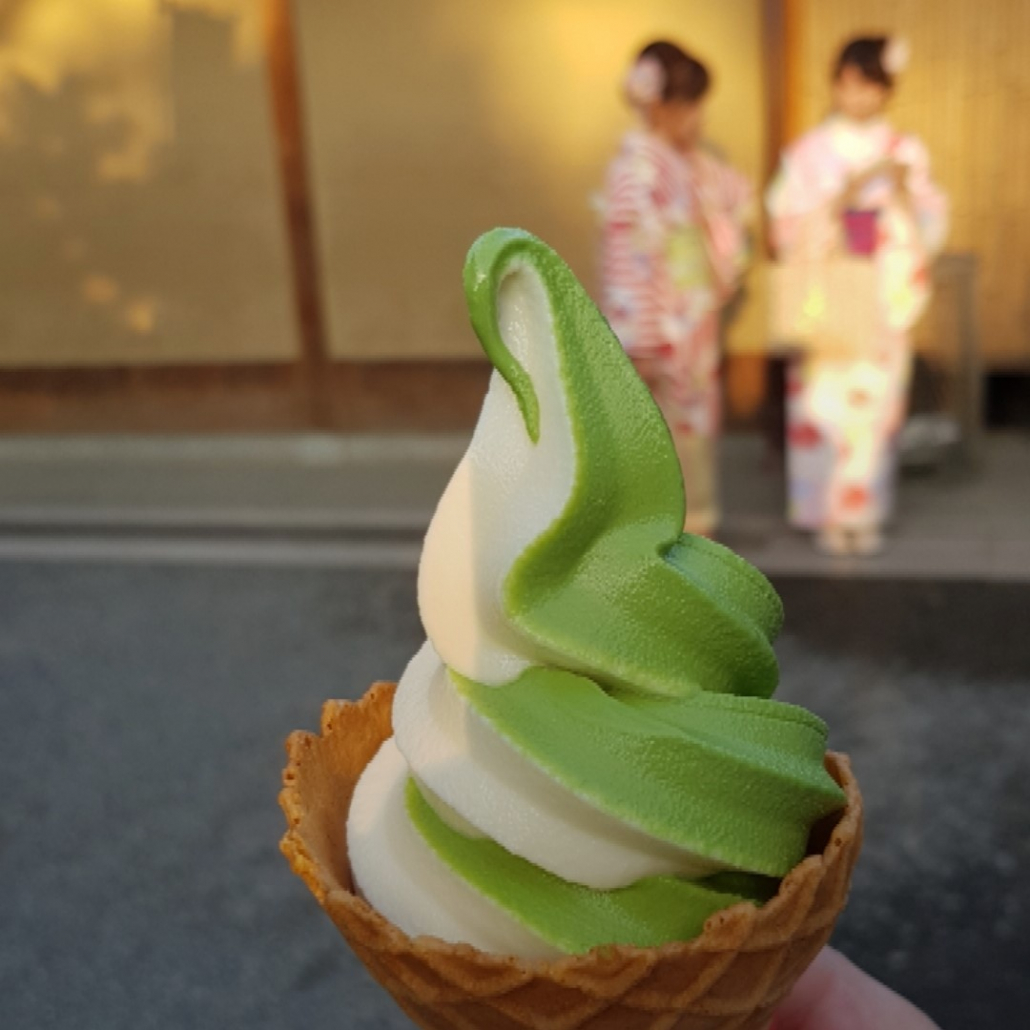Matcha
Matcha often comes in small re-sealable bags or in 30g tins. Per serving (in a chawan), you will need about 1.5g to 2g. [Or as one tea teacher told me: “We use a little less matcha when preparing tea for tourists as they are new to the taste; more matcha for Japanese visitors].
Since light, heat, and moisture are the worst enemies of tea leaves, and since the fine powdered matcha has a much greater surface area open to enemy attack, correct storage is paramount. All matcha storage options, however, need planning ahead a little:
Natsume
A natsume is a beautiful container used for the duration of a Japanese tea ceremony or during the preparation of a chawan of tea for someone much appreciated. The powder from the tin is sieved into the natsume before the presentation so that the guest only sees the beautiful tools.
The natsume is a high-ranking tea tool (Click here for The Rank of Tea Ceremony Utensils) and is wiped with the fukusa for ritual cleanliness. Its history goes back to the time when deserving samurai were awarded natsume together with a plot of land. As it does not seal properly, any leftover matcha should be transferred to a more appropriate container.
Sealable Tin
Matcha can be stored in the tin it came in. It should then be kept in a dry, cool space. If the original tin is unopened, the tea will last until the best before date printed onto the tin. Once opened, the contents should be used fairly quickly. (Some Japanese say within a week or two; some people think it will last a month or two; in Westerner households I have been served matcha well beyond these ideals and was surprised to find that it still tasted nice).
Matcha powder is a bright, seriously pleasing green. You’ll spot the difference when it has become dull, and this is a sign that it is no longer fit for drinking. If you drink the same kind of matcha powder on a regular basis, you will notice that old matcha not only loses its colour but also its flavour. Eventually it will be no more fun to drink it and it may even turn disappointingly bitter (although bitter is not always a bad sign in tea).
Fridge
Matcha can be kept in a tightly-sealed tin in the fridge. This will prolong the life of your matcha and keep it fresh. Some recommend that matcha be removed from the fridge well before preparation in order to give it time to warm up to room temperature.
The problem with the fridge lies in the fact that moving a container in and out will change the temperature inside the container. Every time you open your matcha container, the cold air inside will be exchanged against the warm air in the room. When you put the container back with the residual matcha, the air inside will cool down. Cool air cannot store equally much humidity as hot air and thus a little bit of moisture will react with your (super-dry) matcha. As a consequence, the more often the container is moved in and out of the fridge, the more quickly your matcha will spoil.
In the end, how much matcha you want to keep in the fridge, or whether you may want to divide your 30g tin into two containers depends on your drinking habit.
Freezer
I had already been drinking and preparing matcha for quite a few years when a Japanese tea master mentioned in passing by that the freezer keeps matcha ultra-fresh. One day, it will certainly make for an interesting experiment to compare the different ways of storing matcha in an experiment.
It goes without saying that matcha should not be transferred in and out of the freezer regularly, but dividing a large amount of matcha between the described storing methods (and always with respect to your matcha drinking habits) will probably offer the best solution.
Use It for Cooking
A very nice approach to using leftover matcha is to use it for cooking. You could buy (much cheaper) cooking grade matcha, but if you already have (ceremonial grade) matcha and you’ve accidentally left it until too late, or if you already have (ceremonial grade) matcha but it needs to make space for a more recent (and therefore much fresher) purchase, why not add it to your food as a colourant.
While the taste of matcha in food is usually not overpowering, matcha is pretty cooking-stable and gives food a very attractive green. You can add it to milky drinks (e.g. a Matcha Latte), to fluffy green pancakes (See recipe here), or you can make a green Xmas cookie tree next Christmas to accompany an immensely lovingly packaged tin of matcha.

